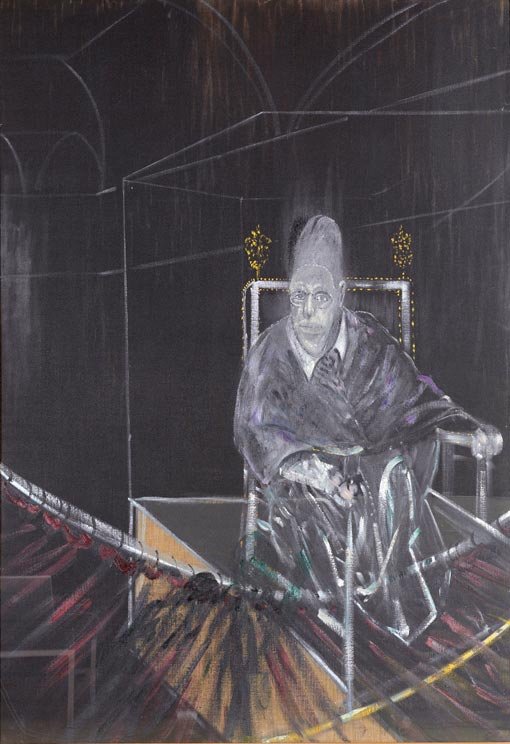1950s

I’m just trying to make images as accurately off my nervous system as I can.
- Francis Bacon
Despite an unsettled lifestyle and not having a permanent studio, the 1950s was a productive period for Bacon. In 1956, Peter Lacy – his lover during these years – moved to Tangier, Morocco, where Bacon visited him.
In this decade Bacon experimented with subject matter and technique, and expanded his sources for imagery – ranging from personal experience to the work of artists such as Velázquez and van Gogh, film stills, pages torn from books and magazines and the analytical photographic motion studies of Eadweard Muybridge. Muybridge’s 19th-century photographs informed several of Bacon’s paintings, including those of wrestling men, although Bacon’s figures have distinctly sexual overtones.
Many of Bacon’s works from this time were painted in series and often hastily completed for exhibition deadlines. He applied paint more thinly than in earlier work, with the colour and texture of raw canvas visible beneath translucent washes. Reflecting the muted colours and claustrophobic atmosphere of 1950s London, Bacon’s palette was dominated by subdued greys, blues and earthy tones. There were some exceptions such as the van Gogh series represented in the exhibition by Study for a portrait of van Gogh IV 1957.